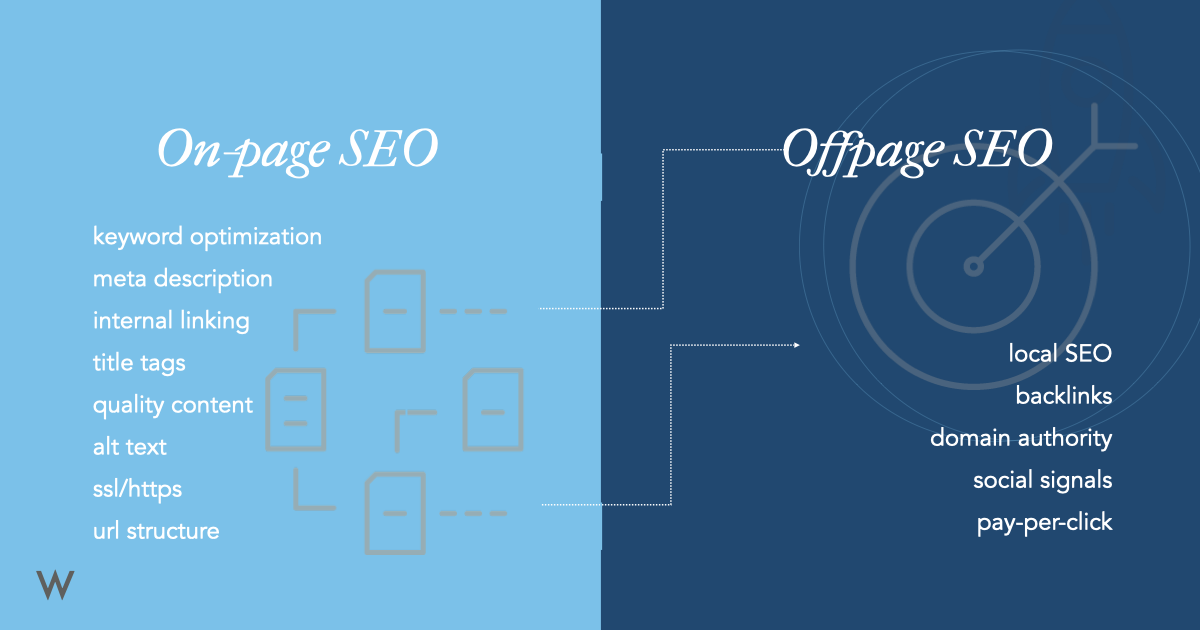Industrials
The internet has profoundly changed the way business is done. Twenty years ago, the internet was still in its infancy — Facebook and MySpace had just launched — and businesses tried to reach buyers through print advertising, direct mail, TV commercials and other methods. Inbound marketing is ideal for attracting, engaging, and closing today's buyers, especially in complex industries with highly considered purchases. Read on to learn why and how it works.

Table Of Contents
INTRODUCTION
Traditional Marketing Doesn’t Work Anymore
Today, consumers and B2B buyers aren’t seeing — and aren’t being persuaded by — “push” tactics. Instead, they have complete control over what they see, and where, when, and how they see it. As they contemplate their challenges/needs and how they’ll solve them, they use online searches and social networks to find product reviews and information; to follow industry news, trends, and technology; and to talk with peers and professional connections about their product and service experiences.
In fact, 70% of a B2B buyer’s research is done online before reaching out to a potential vendor partner.
Today, 94% of B2B buyers use online search as they make purchase decisions, rendering traditional advertising strategies nearly obsolete – and certainly ineffective.
To learn how (and why) Inbound Marketing is turning Traditional Marketing upside down, read these helpful blogs!
Inbound Marketing?
Inbound Marketing is a specific set of marketing tools and processes that recognize:
- Facts. Today, the Internet is where people do research, look for solutions, search for options and even purchase products
- Content holds all the power. When prospects are looking for solutions online, you want your business to come up high in search engine results. To do that, content must be created in a way that aligns with how Google’s algorithms work. When you have content that aligns with your prospects’ searches, Google will “present” you to prospects, who will then go to your site. The content on your site and offered through your site (in the form of ebooks, tip sheets, blog posts, etc.) must address prospects’ concerns and answer their questions
- People coming to your site and showing interest in content need to be “nurtured.” Landing on your site and seeing that you offer content that provides them value isn’t enough: you need a process by which all interested visitors (those who provide their contact info in exchange for a piece of content) are sent additional offers of related content (that’s what nurturing is, and it happens via email, primarily). What you offer them is based primarily on the content and topic(s) they’ve already shown interest in
Want more information about Inbound Marketing? Review these insightful blogs!
Marketing Methodology
The inbound methodology starts with attracting the right prospects to your site and ends with efforts to keep customers highly satisfied with your company:
- Attract more high-quality traffic to your website (prospects in need of your solution)
- Convert site Visitors into Leads by offering valuable content in exchange for contact (and other) information
- Qualify those Leads based on criteria you set
- Nurture those Leads with additional, relevant content
- Analyze online activity to optimize all parts of your inbound program
- Close sales by appropriately responding to prospects’ actions/behaviors
- Then, once the Lead is a Customer, inbound marketing should continue to Delight them so they’re easily upsold and will recommend your brand to others
Let's look at each of these steps individually:
Attract
Attracting prospects to your website is accomplished when you publish (in blog posts and content like ebooks, guides and tip sheets) relevant, helpful content (answers, information, statistics, points of view, etc.) that prospects are actively looking for online as they search for answers to their questions. The type of information a prospect is looking for depends on where he/she is in the buyer’s journey, so the range of content offered should address each of those steps in the journey: Awareness, Consideration, and Decision.
Awareness
The prospect knows he has a problem/challenge, but may not even understand the full extent or implications involved, so he begins researching the problem online. When he does, he sees potential solutions.
Consideration
In this stage, he’s narrowed down the potential solutions to those most aligned with his needs and is comparing as a way to learn more about each.
Decision
In this last stage (which is typically the shortest), he’s “kicking the tires” and looking for something that tips the scales in one vendor’s favor over the other.
To develop content that addresses prospects’ needs at each stage, you first must create two distinct tools: buyer personas and buyer’s journey maps.
Buyer Personas
To develop an actionable buyer persona, you first must get internal consensus on who constitutes your best target; once you've determined who it is you want to focus your sales and marketing efforts on, you need to develop a deep understanding of that target. It’s not enough to look at basic demographics; to effectively market your product, you need to understand him or her in almost obsessive detail: responsibilities, reporting relationships, motivations, hurdles, perceptions of your product/industry, personality and more.
Read more about personas in these popular blog posts!
Buyer’s Journey Map
Mapping your buyer’s journey adds a critical dimension to your persona that allows you to align content (answers) with the prospect’s specific needs (questions) as they go through the Awareness, Consideration and Decision stages in the buyer’s journey. Prospects think and behave differently in each, and by mapping their journey you’ll answer these questions:
- What’s the prospect thinking at each stage in the journey? What pressures are motivating him to find a solution and what are the criteria he’s using to evaluate them?
- What type of information is needed at each stage? Is it a broad view of the challenge, or greater detail? Is it related to performance, price, peer reviews…?
- What terms might the prospect be using in search at each stage?
Want to know more about the buyer's journey? Read this interesting blog:
Attraction Tactics
Once your buyer personas and buyer’s journey are complete, you’ll begin reaching those prospects with appropriate content in the Attract phase of the inbound methodology.
During the Attract phase, content will address basic questions and the needs prospects have as they being their search for information related to their challenge. We call this kind of content top-of-the-funnel (ToFu) content.
Some examples of ToFu content are:
- blog posts (the most effective attraction device)
- tip sheets
- short videos
- solutions briefs
- and others that provide basic levels of information that help the prospect understand the scope of his problem and begin understanding the solutions available
All of these can be promoted to prospects using blogs, social media and email:
- Blogs will be found when the prospect types in a search term that relates to your content
- Social media can be used to promote your posts
- You can also email prospects whose address you have
- Within each blog post, you’ll include an offer of additional, related content (like tip sheets, solution briefs and more)
Convert
Once you’ve attracted visitors to your site, the next step is presenting the visitor a compelling call-to-action (or CTA – a graphic button that tells the visitor to click to get a piece of content). When they click on that button they’re taken to to a landing page, where they can submit their contact information in exchange for an advanced content piece. This is how a Visitor becomes a Lead.
The convert phase is broken down into three different areas: Qualify, Nurture and Analyze.
Qualify
Qualifying leads – determining how well suited they are for your products/services/company – is done in part by evaluating their actions to determine how to categorize them. Knowing which category they’re currently in allows you to send the right content offers (or it may signal that it’s time to reach out directly).
Another method for qualifying is to determine who is a marketing-qualified lead (MQL) and who is a sales-qualified lead (SQL). Every company defines its MQLs and SQLs using different criteria, but generally an MQL is a Lead that fits certain demographic qualifiers (and therefore is ready for being marketed to), and an SQL is a Lead who has exhibited interest and fits behavioral qualifiers (and is therefore ready for Sales to engage with him).
Nurture
With prospects’ contact information (which they gave you in a landing page form in exchange for a content piece) and having put them into specific lifecycle stages, you can now nurture them with relevant content – sending emails that contain CTAs suggesting additional tip sheets, eBooks, and case studies they might be interested in, based on what content they’ve already downloaded and actions they’ve taken. As contacts download this more in-depth content, they move further down the marketing funnel, getting closer to becoming a Customer.
Why is it important to nurture?
- Companies that excel at Lead nurturing generate 50% more sales ready leads at 33% lower cost
- Nurtured Leads produce, on average, a 20% increase in sales opportunities versus non-nurtured leads
- Nurtured Leads make 47% larger purchases than non-nurtured leads
Analyze
The performance of every tactic and action being executed as part of an inbound marketing strategy is measured constantly. The data and insights they reveal are used to make modifications that ensure that the website, emails, social media, content, content workflows, and more are reaching the right targets at the right times with the right messages – in other words, it’s possible to always be ensuring a fully optimized program. Metrics are available in real time and through the HubSpot portal, giving all parties visibility into the success of the program.
Close
A strong closing strategy begins with the efficient transfer of Leads from Marketing to Sales. A Service Level Agreement (SLA) outlines the proper processes for both teams] at the appropriate time and with action steps clearly outlined. Using analytics and lead qualification data, advanced lead scoring helps set priorities for the Sales team, indicating which Leads are ready for a conversation and what that conversation should focus on.
Learn how to close more (and more qualified) leads with these helpful blogs!
Delight
Closing a customer doesn’t mean your job is done. In fact, it’s important to continually provide value to existing customers in order to foster referrals and generate new opportunities to upsell. Delighted customers become promoters of your brand, helping enhance your Attraction efforts.
Delighting customers can be done by continuing to:
- Answer their questions. You can send content offers to customers, too, covering topics you know to be of interest to them
- Solve their problems. Your Customer Service and Sales teams likely know about struggles the customer is facing (overseas competition, contracting labor force) that your Sales team can help address with insights and guidance, which might in the form of content
- Help them reach their goals. Just as your teams can help solve problems, they can help them reach their productivity and revenue goals, with tips, recommendations, additional products and/or services and other methods
- Be enthusiastic. Every customer wants to know that you value their business and that you’re an engaged partner eager to help. It’s important that you always present the same enthusiasm and appreciation that you did when you first began the relationship
Although delighting customers is the last step, it’s important and, unfortunately, the most forgotten and underutilized part of the methodology. Marketing can play a huge role in your customers’ experiences.
Learn more about delighting your customers by reading this blog!
Marketing Strategy
Inbound Starts with Your Website
Your website plays an absolutely critical role in the overall success of your inbound program. It’s your 24/7 sales tool, with the power to clearly demonstrate why you’re your prospects’ best potential partner. Getting your site ready to accommodate the different tools and processes of an inbound marketing approach requires some modifications to the site, primarily in how it presents offers of content, and how it makes nurturing possible (and automatic). Some of the elements involved are discussed below.
To learn more about websites and inbound marketing success, read these helpful blogs:
SEO
How do you actually get prospects to your site? It requires aligning your website and all its content (page copy, content offers, images and more) with what search engines are looking for when a person types in a search related to what you do/offer. The process of developing the most “search friendly” site is called search engine optimization, or SEO.
Search engine optimization (SEO) uses tools and methods to increase the quantity and/ or quality of traffic to a website organically (not through paid advertising). SEO is part art, part science, and it’s always evolving because search engines are continually modifying the algorithms that determine what sites it will present to a searcher in response to his or her query.
To gather more insight about SEO, read these helpful blogs:
Blogging
Of all the methods inbound marketers use to attract visitors to their sites, blogging will make the biggest impact. Regularly blogging with smart, valuable content improves your company’s visibility because they’re shared and promoted across the web (something Google likes to see), and they’re considered “indexed pages” of high quality content (the more you have, the more Google values your site). In addition, a blog is a great way to establish a manufacturer’s credibility as a thought leader within their industry. Here are some of the most telling statistics about blogging:
- Internet users in the U.S. spend 3x more time reading blogs than they do on email
- 57% of companies with a blog have acquired a customer from their blog
- Businesses that have 401-1000 indexed web pages get 6x more leads than those with 51-100 pages. And, once a site has over 300 indexed pages, traffic generation increases by 236%
- The average company that blogs gets 97% more inbound links
Blogs generally cover a topic in a fairly basic way, ideal for prospects in the Awareness stage (just beginning to learn more about possible solutions). When there’s a CTA button somewhere in the post, blogs are very effective in leading readers to a piece of content (related to the topic of the blog posts, usually) that answers more of their questions. Once they click on that CTA, get to a landing page for the content and fill out the form to get the download, they’re a Lead.
Want to up your blogging game? Read some blogs about blogs!
Advanced Content
Why does advanced content need a place in your inbound marketing program? The simplest answer is because it’s what allows you to convert Visitors to Leads.
Here’s how it works: you insert a CTA that offers a free guide at the bottom of a blog post; the reader clicks on it to learn more about the content piece; he’s taken to a landing page where the guide is explained in basic detail; to get his free copy, he must fill out a form that gives you (among other things) his email address. Now you have a way to nurture him with additional content – content that continues to demonstrate your expertise. An example of a content piece that would get a facilities manager’s attention (and give you his contact information) would be a 4-page guide titled, “3 Simple Steps That Will Reduce Your Downtime by 22%.”
Another benefit of creating advanced content is that the more you double down on a topic, the more of a thought leader you become.
For more about advanced content, review this blog!
To help provide some guidance on the different types of advanced content for top- (ToFu) and middle-of-the-funnel (MoFu) prospects, we made this handy infographic explaining 20 different types of advanced content businesses can use to generate more traffic and, more importantly, more leads. Click here to read the full article.
Video
It’s estimated that video traffic will make up roughly 80% of consumer Internet traffic by 2021! Plain and simple, there’s no better time to use video as part of your inbound marketing strategy. There are a number of types of video that are being used successfully – below are a few that are most effective.
Explainer
This type of video provides an overview of a concept, process, product, service...anything that prospects want to know more about. While you can write content that explains the topic, video is often far more engaging. Check out our example below where we explain ToFu, MoFU and BoFu content and how it plays a role in your buyer's journey.

Testimonial
Testimonials from customers telling your prospects how well your product works (increased productivity, reduced downtime, simple maintenance, etc.) is more powerful than you telling prospects the same thing – it’s a peer and in that way has added credibility.
Tour
Often a plant tour is what sells a customer on the potential vendor, and you can get to that point in the relationship more quickly when you provide a tour of your facility, highlighting your ISO certifications or other compliance.
Demonstration
Side-by-side comparisons with a competitor’s product, run-through of a product’s functionality, a video showing how to perform simple maintenance...all of these and more make great video content prospects will get value from.
Learn all about video's role in marketing by reading these blogs:
Social Media
Though most industrials are under the impression that their audience isn’t on social media, that’s simply not true. However, when it comes to choosing which social networks to promote your content on, some are more effective for manufacturers than others. For example, Facebook is best used in promoting a manufacturer’s culture as a way to aid in recruiting but is not effective in generating leads. LinkedIn, on the other hand, has been shown to be very effective as an engagement tool and a platform to present and offer content. An inbound marketing plan will include a social media strategy designed to identify the most appropriate and effect channels, along with the recommended frequency and subjects.
Paid Media
Digital advertising is essentially an outbound (“push”) tactic, but can be leveraged to accelerate results you’ll see from your inbound tactics. Because Google sees how much content you’re publishing (and rewards you more the more you have – and more frequently you publish), it may take a few months before you get maximum traction. In the meantime, some companies place Google ads to increase their visibility. The click-thru rate from those ads can get prospects to your content as you’re waiting for organic traffic to build.
A well-crafted email marketing strategy outlines what prospects get which emails when, and what those emails promote. Email marketing allows you to promote new blog articles to blog subscribers and new advanced content pieces to those who have opted into email communications. Detailed workflows determine which prospects get which content, in what sequence and how often.
Marketing & Sales Alignment
Once you’ve implemented the components we’ve discussed above, leads will start rolling in – then what? It’s important that your Marketing and Sales teams are working towards the same goals, with the same set of action steps dictating how Leads are handled once they’re in your system. A Marketing & Sales Alignment (SLA) establishes and holds each team accountable for all of this.
A Service Level Agreement (SLA) breaks down the complex B2B process of inbound lead generation and sales so that everyone involved in business development has a clear and deliberate plan. No more unknown or assumed expectations between departments or team members, no more wasted effort in pursuing low-value leads, and no more process confusion.





























